Kings of War tactics – when’s best to charge?
14th Nov 2016
Dave
Article by Nick Williams
Players are often eager to charge as soon as possible. Get in there, do that damage! Isn’t that what the game’s about?
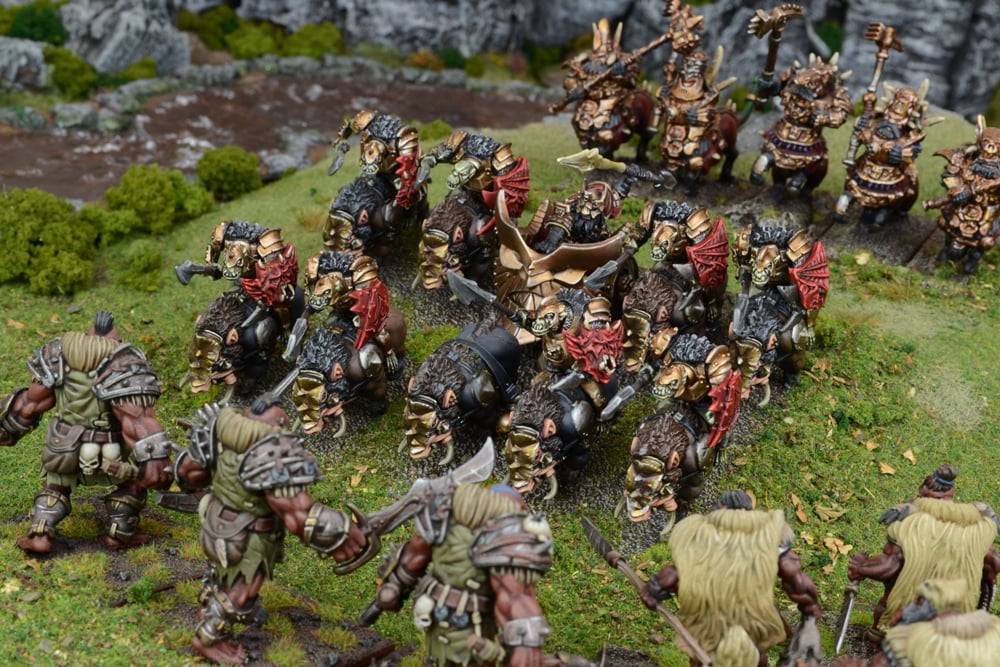
Good players can use this mindset to their advantage and set up traps. They deliberately made sure that something can be charged in order to draw you in and, even if they lose the unit that you charged, make sure that they are now in a stronger position. It can often be to your advantage not to charge and force the enemy to react to your actions (or rather inaction).
Your guiding thoughts when weighing up whether to charge or not should be:
- Where will my unit end up if I win the combat and rout the enemy unit?
- Where will my unit end up if I don’t win the combat and fail to rout the enemy unit?
You should always answer both of these questions before making a charge and ensure that you’re happy with where your unit will end up after the fact. Even if you think that your unit will definitely win, think about where your unit will be sat if that dreaded double-1 nerve test comes up. If you don’t like where you’ll end up, don’t take that charge!
The obvious bait
Let’s look at this situation. You are facing down your opponent’s battle line. You both have speed 5 units, charge range of 10 so it’s a bit of a stand-off. Except your opponent moves a chaff unit so that it is in your charge range.
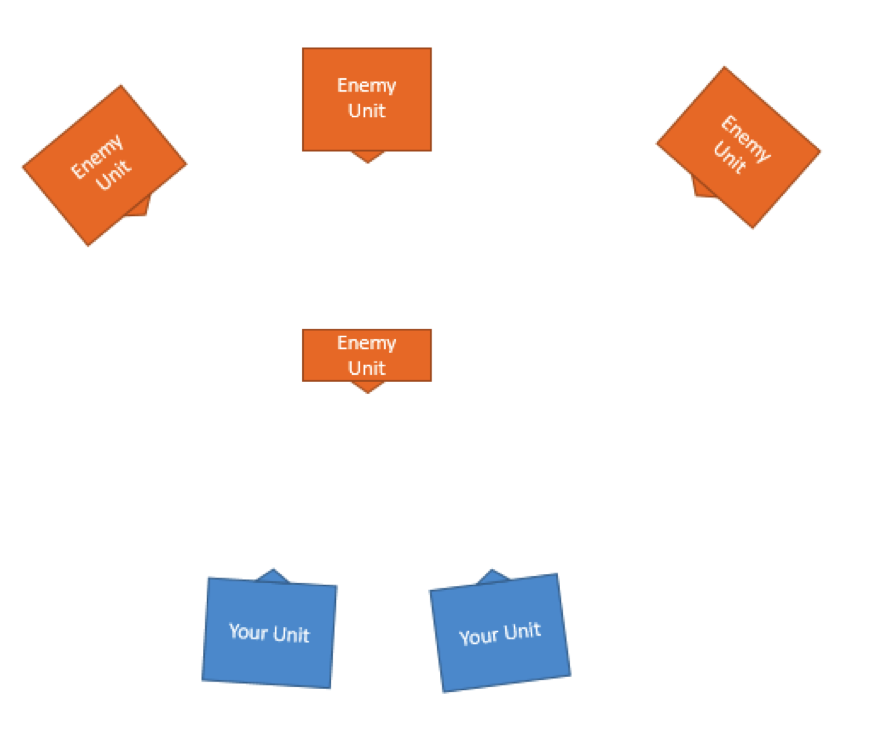
Do not take this charge. Even if you charge and wipe out the unit, you will find your units sat right in front of the enemy heavy hitters. You’ll have taken out a single, insignificant chaff unit but likely suffer heavy casualties in return. It’s better to back off and wait for other units to arrive in order to break the stalemate.
The hindered charge
The enemy has charged you in a forest. Your unit can withstand a few rounds of damage from the enemy, especially while hindered (-1 to hit) but the two of you will just end up endlessly grinding on each other even if you’re counter-charging. Perhaps your unit will struggle to any damage to the enemy at all. Don’t charge back in.
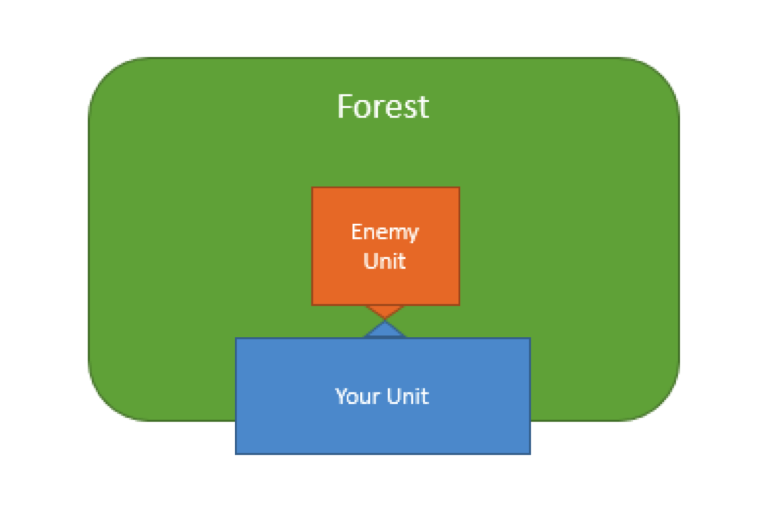
It seems counter-intuitive, but if you counter-charge then you don’t suffer the hindered modifier. The same applies to your opponent. If you instead stay where you are, they’re stuck having to carry out a charge order which means that they’ll be hindered again. Let them grind endlessly on your unit, doing minimal damage due to the -1 to hit and lack of Thunderous Charge. They’re locked in place and you can either shoot them to death or bring in a more combat oriented unit to hit them in the flank or even rear.
Blocking the enemy
I’m facing down an enemy battle line. Luckily I have a fast chaff unit, such as a troop of Gargoyles of Goblin Fleabag Riders, who are in charge range of the enemy.
I’m not going to charge them in.
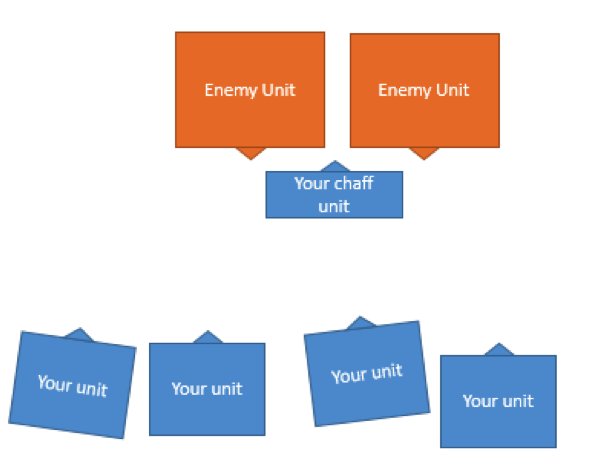
Instead I’m just going to move them up so that they block the movement of the enemy units. In the diagram above, the two enemy units can’t pivot clear of the blocking unit right in front of them and still able to charge the enemy units behind (unless the enemy units have got Nimble). They are blocked in and forced to charge my cheap, disposable chaff.
If I were to charge them in then I can only hit one of the units, and I’m very unlikely to break the enemy with the chaff unit. Now I know that the chaff will die on the counter-charge and do very little to no damage, so placing them in such a way that they block the enemy charges to my units means that I can safely move up. The enemy is forced to charge my chaff, and when they inevitably rout it, my units are ready to charge.
In this situation the enemy is well and truly trapped. If they try and back up but you’ve positioned your units correctly, they will still be in your charge range. If they sit still and leave the chaff alone, you’ll charge them anyway. Good for you, bad for them.
The pivot dance
This one often comes up against newer players who use their units in isolation of each other.
I have a flying or nimble unit that is cunningly positioned in the flank or rear of an enemy unit. The enemy pivots to face me so I’m now in their front arc. Rather than doing a front charge, I just use my nimble movement to get out of their front arc and face their flank or rear again. They then pivot to face me, and I keep on doing it. Unless they have Surge, they’re never going to catch me with that single unit but I’ve kept their unit tied up for as long as I want.
This doesn’t happen against more experienced opponents since they won’t have a single unit stood out on its own without any supporting units who are able to cover potential landing spots.
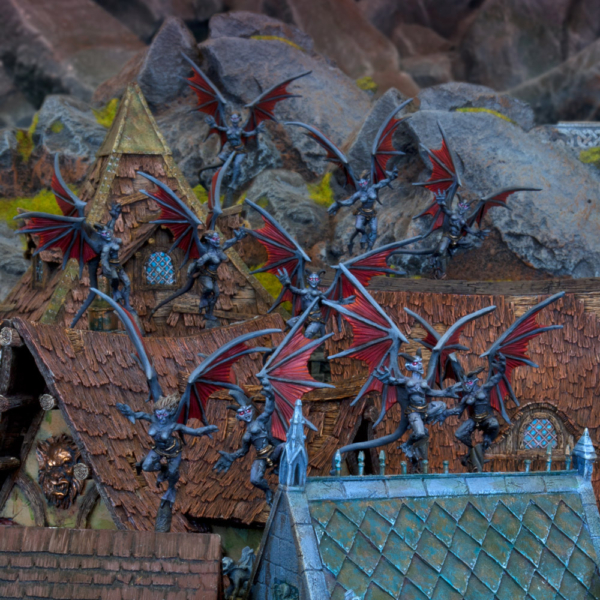
I most recently did this with a troop of Gargoyles (80 points) vs my opponents Varangur Direfang Horde, and kept it tied up the entire game just turning to face my Gargoyles. What my opponent didn’t realise is that even with triple attacks I wouldn’t have charged my Gargoyles in. The Gargoyles wouldn’t have broken the Direfang Riders even with a rear charge, but would have definitely been wiped out with the Direfang’s counter-charge!
Summary
Newer players are often in such a rush to get into combat that they don’t stop to think about whether they should get into combat. More experienced players can use this to their advantage and bait the other player into charging into a trap. Remember the two golden rules:
- Where will my unit end up if I win the combat and rout the enemy unit?
- Where will my unit end up if I don’t win the combat and fail to rout the enemy unit?
